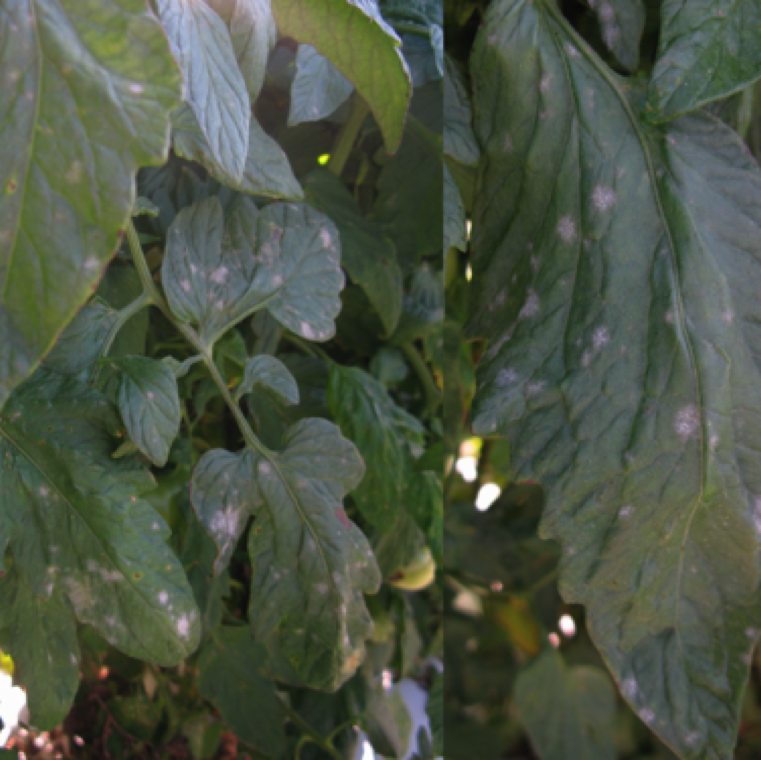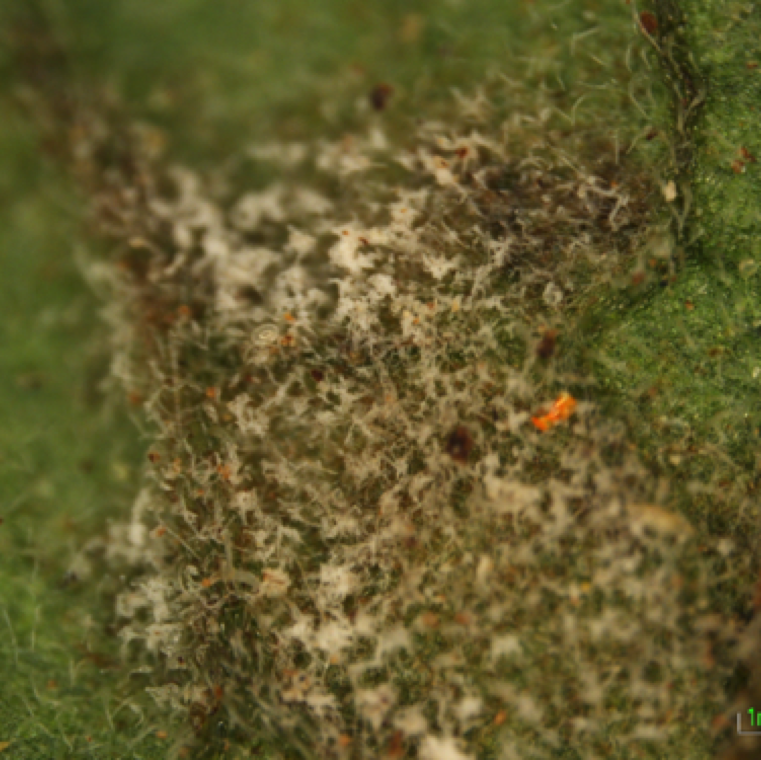

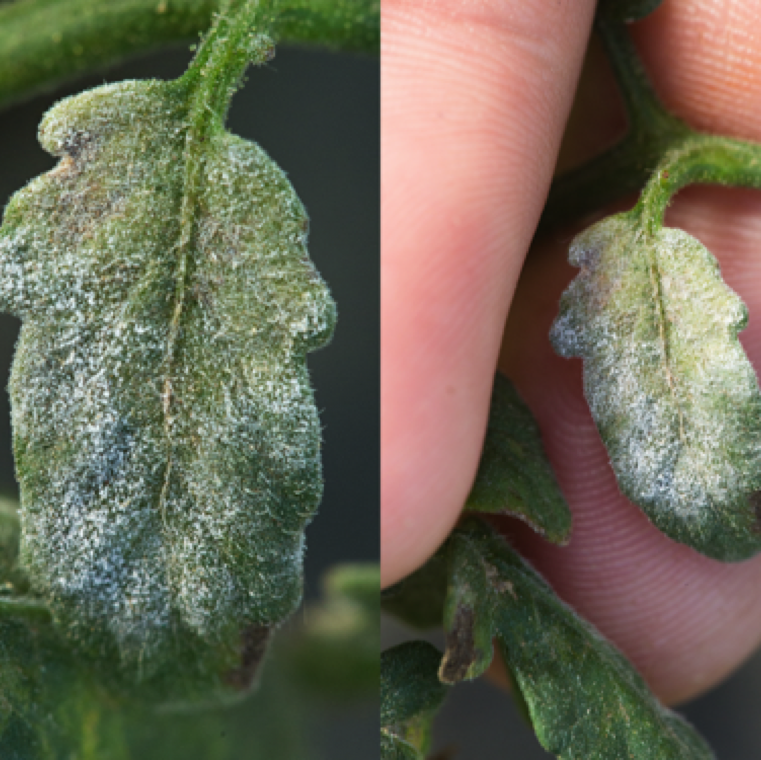
The disease is not a problem in open field tomato production in Florida and can only be rarely be seen. However, it can be noticed much more frequently in protected tomato cultivation.
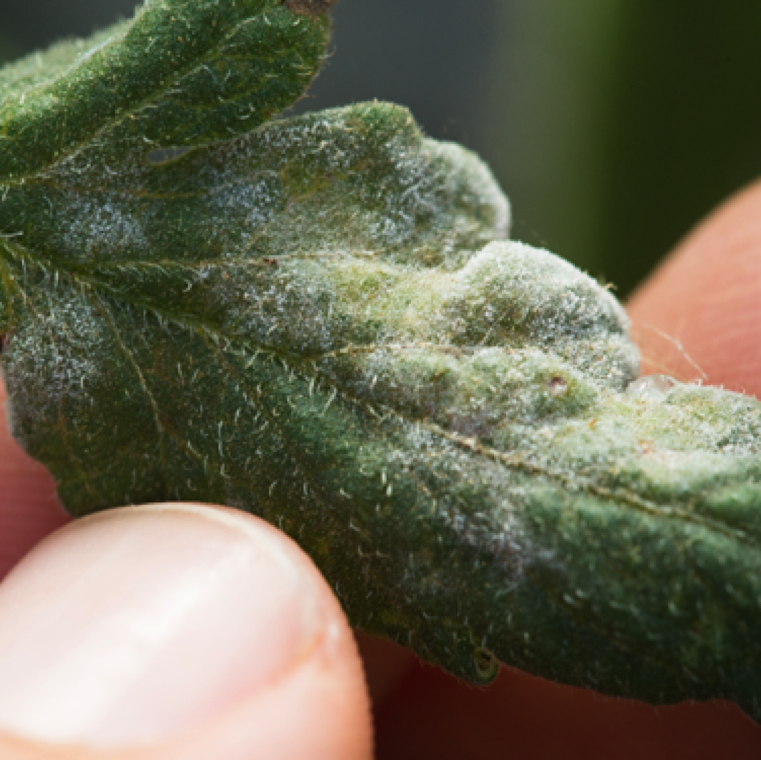
Powdery sporulation is the key identifiable sign of the disease mainly on the upper side of the leaves for Oidium and typically lower side of the leaves for Leveillula.
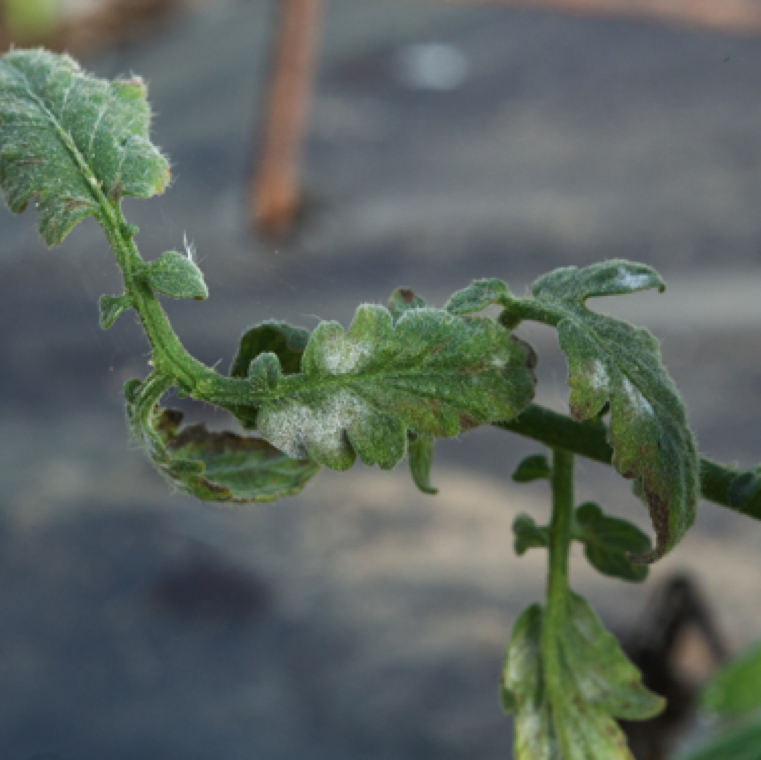
When the infection becomes severe, white fungal sporulation can be noticed in every part of the plant except the fruits. The leaves can turn yellow upon severe infection.
POWDERY MILDEW
Fungal causal agents: Leveillula taurica; Oidium lycopersicum
Tomato diseases
